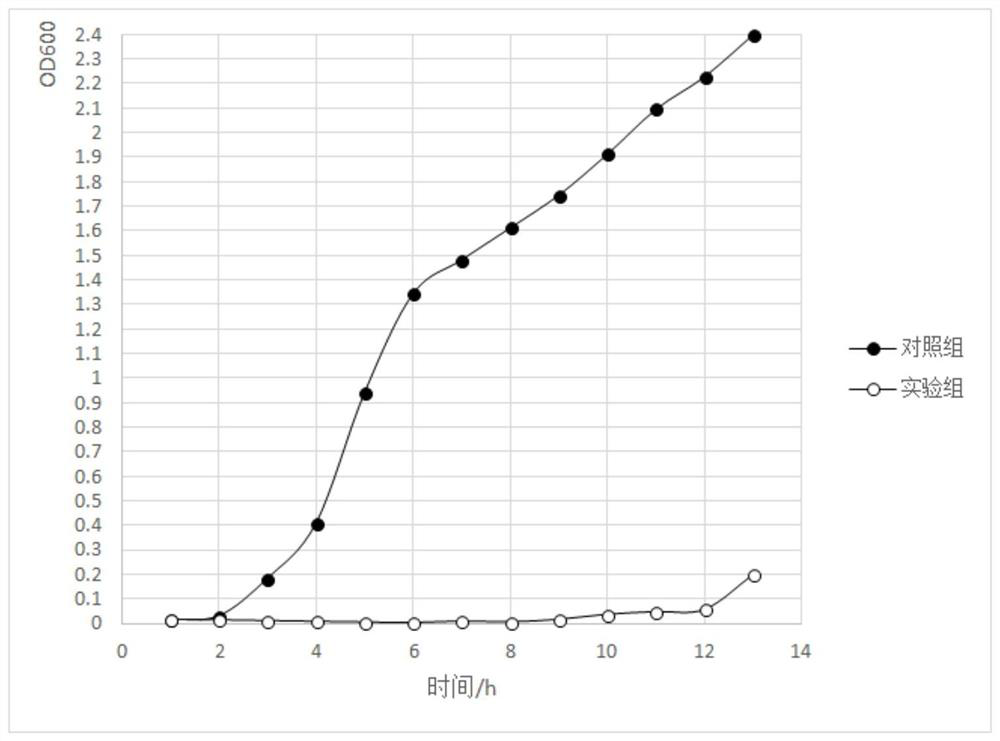A high-temperature-resistant strong Proteus phage rdp-sa-20018 and its application
A technology of RDP-SA-20018 and Proteus, which is applied in the direction of bacteriophage, virus/phage, medical raw materials derived from virus/phage, etc., can solve the problems of drug resistance of pathogenic bacteria, untimely treatment, ineffective medication, etc., to achieve High potency, wide cracking spectrum, good control effect
- Summary
- Abstract
- Description
- Claims
- Application Information
AI Technical Summary
Problems solved by technology
Method used
Image
Examples
Embodiment 1
[0029] Example 1 Isolation and purification, drug resistance and virulence gene identification of pathogenic Proteus BS-20013
[0030] (1) Isolation and identification of Proteus
[0031] Samples were taken from the viscera of sick and dead chickens in a farm in Liaoning Province, and the aseptic method was used to draw a line on the SS medium. After culturing at 37°C for 18-24 hours, there were white neat colonies with a black center and a white edge on the SS agar plate. About 2-3 mm; pick typical colonies and streak them on LB agar plate, after culturing at 37°C for 10-24 hours, they will show diffuse growth on LB agar plate, pick typical colonies and continue to streak and purify for 3 times, then pick a single colony Inoculate in 5 mL of LB liquid medium, culture at 37°C with shaking at 200 rpm for 8 hours, and obtain a uniform turbid bacterial suspension. Through 16sRNA molecular identification, it was determined to be Proteus, and one of them was named BS-20013.
[00...
Embodiment 2
[0040] Example 2 Isolation and identification of Proteus phage RDP-SA-20018
[0041] (1) Sampling: The sample used in the test of the present invention was collected from the sewage around the diseased farm in Liaoning Province in 2020 as a water sample isolated from bacteriophage.
[0042] Take 10 ml of sewage, centrifuge at 10,000rpm for 5 minutes, remove larger impurities and most of the bacteria, and then use a 0.22 micron microporous membrane to filter and sterilize. Take 3 milliliters of the filtrate and 3 milliliters of the host bacterial suspension, add them together into 20 milliliters of autoclaved 2216E liquid medium, and then place them in a 37°C incubator for overnight culture. After culturing, take 5 ml, centrifuge at 10,000 rpm for 5 minutes, and then filter and sterilize with a 0.22 micron microporous filter. The filtrate is the stock solution intended to contain phage. Then, use the double-plate method to identify whether there are phages. If there are phage ...
Embodiment 3
[0047] Morphological observation of embodiment 3 phage
[0048] Using phosphotungstic acid negative staining method: drop phage liquid (titer 10 10 pfu / m L) 100 μL, place the membrane side of the copper mesh on the phage droplet, take it off after 10 minutes, and let it dry naturally in the air for 2-3 minutes. Then drop a drop of 2% phosphotungstic acid (PTA) aqueous solution on the copper grid for staining, take it off after 10 minutes, dry it in the air for 10-15 minutes, observe with an electron microscope, and select a clear phage image to take pictures.
[0049] Depend on figure 1 It can be seen that the head of the phage is regular hexagonal, the diameter of the head is about 52nm, and the length of the tail is 110nm, which is a long-tailed phage.
PUM
| Property | Measurement | Unit |
|---|---|---|
| diameter | aaaaa | aaaaa |
| length | aaaaa | aaaaa |
| diameter | aaaaa | aaaaa |
Abstract
Description
Claims
Application Information
 Login to View More
Login to View More - R&D Engineer
- R&D Manager
- IP Professional
- Industry Leading Data Capabilities
- Powerful AI technology
- Patent DNA Extraction
Browse by: Latest US Patents, China's latest patents, Technical Efficacy Thesaurus, Application Domain, Technology Topic, Popular Technical Reports.
© 2024 PatSnap. All rights reserved.Legal|Privacy policy|Modern Slavery Act Transparency Statement|Sitemap|About US| Contact US: help@patsnap.com










